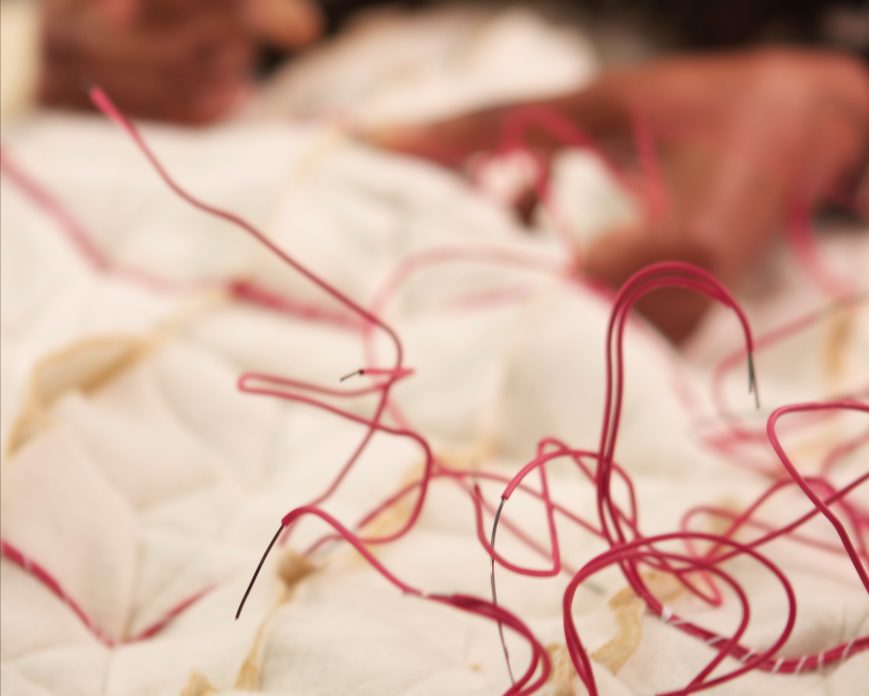The Textile Mirror


The Textile Mirror is a prototype wall panel that changes shape in response to people’s emotions. In particular, our team envisions that this prototype could be used to help a user modify their emotional state from stressed or angry to happy and calm, simply by attempting to transform the shape of the fabric. Our intent was for the user to observe the fabric changing in reaction to their stressful state, and then reflect on their emotional state in order to try to relax.
Source
Ballard, J.G. 1000 Dreams of stellavista. The Complete Stories of J.G. Ballard. W.W. Norton & Co. New York, 2001.